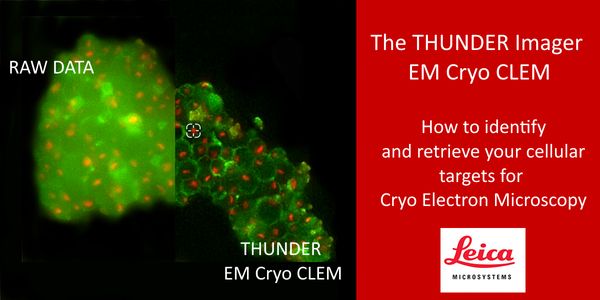Observation Study
An observational study is done by observing individuals and/or measuring a given outcome. In observational studies, no attempt is made by the researchers to intervene or alter the outcome. An example of an observational study is surveying a random group of individuals about what they eat for breakfast and determining if their breakfast habits impacted body weight.
-
SEP 10, 2020 | 1:00 PMIn Pacific Northwest watersheds several species of Pacific salmonid fishes are hosts for the rhabdovirus infectious hematopoietic necrosis virus (IHNV). In this multi-host ecosystem speciali...SEP 10, 2020 | 12:00 AMSepsis is a life-threatening condition that is caused by the immune system’s inability to respond appropriately to an infection. How sepsis can change the gut microbiome in ways that a...SEP 09, 2020 | 12:00 AMOver the last several decades, antibodies (Abs) have become a valuable weapon in the fight against viral infections, with several studies demonstrating the importance of both neutralizing an...AUG 06, 2020 | 12:00 AMAuxin is a hormone crucial in nearly every aspect of plant growth and development. Advancing our understanding of auxin signaling in maize and other crop plants may provide needed tools for...JUL 29, 2020 | 2:00 PMB7-H3 is actively being explored as an immunotherapy target for pediatric patients with solid tumors using monoclonal antibodies or T cells expressing chimeric antigen receptors (CARs). B7-H...Speaker: Christopher DeRenzo, MDPresented at: Immuno-Oncology & Cancer Biology Virtual Conference
JUL 29, 2020 | 9:00 AMAdvances in genetic engineering have improved specificity, safety and potency of T-cell receptor (TCR) and Chimeric Antigen Receptor (CAR-T) based therapies for solid and non-solid tumours....Speaker: Juan Miguel Sanchez Nieto, PhDPresented at: Immuno-Oncology & Cancer Biology Virtual Conference
JUL 07, 2020 | 7:30 AMIn line with the role of T cells as critical mediators of the adaptive immune response, recombinational and junctional diversity of the T cell receptor makes each T cell almost entirely uniq...JUN 30, 2020 | 10:00 AMDATE: June 30, 2020 TIME: 10:00 am PDT, 1:00 pm EDT COVID-19 is a highly pathogenic disease caused by severe acute respiratory syndrome coronavirus 2 (SARS-CoV-2). We have assembled a panel...JUN 24, 2020 | 9:00 AMDATE: June 24, 2020 TIME: 9:00am PT, 12:00pm ET Some of the key factors in viral pathogenesis are the molecular mechanisms enabling viral entry into cells. Inhibitors of viral entry are ofte...JUN 18, 2020 | 10:30 AMWhile the introduction of atmospheric pressure ion sources, such as electrospray ionization, revolutionized the field of mass spectrometry it also introduced new instrumental compilations no...JUN 03, 2020 | 12:00 AMThe mammary gland is a unique organ that develops predominantly after birth and undergoes dramatic remodelling in reproductive phases. Macrophages have been implicated in mammary gland funct...JUN 03, 2020 | 12:00 AMCentriole assembly requires a small number of conserved proteins. The precise pathway of centriole assembly has been difficult to study, as the lack of any one of the core assembly proteins&...MAY 20, 2020 | 12:45 PMBackground: Despite the immunogenicity and safety profile of dendritic cell (DC) vaccines, the importance of vaccine-induced antigen-specific T cell responses is unclear across clinical tria...MAY 20, 2020 | 11:15 AMBackground: CDK4/6 inhibitors increase tumor immunogenicity in preclinical models of breast cancer and several trials combining CDK4/6 inhibitors and anti-PD1/PDL1 therapies are underway. Ho...MAY 19, 2020 | 11:15 AMBackground: Growing evidence supports the critical role of preexisting immune response in triple negative breast cancer (TNBC). However, there are limitations with current evaluation approac...MAY 14, 2020 | 12:00 AMAnimal welfare is the most important issue in any in vivo laboratory. The ability to detect and intervene in cases where the conditions of animals may be deteriorating as well as the ability...APR 29, 2020 | 9:00 AMDATE: April 29, 2020 TIME: 9:00am PT, 12:00pm ET Recent revolutionary developments in the field of cryo electron microscopy (EM) revealed cellular mechanisms in subnanometer resolution. Unfo...APR 29, 2020 | 6:00 AMPurpose: Group B Streptococcus (GBS) is a Gram positive coccus which is part of the normal microbiota of the GI and GU tracts. However GBS is also a major cause of septicaemia and meningitis...APR 21, 2020 | 1:30 PMTriple-negative breast cancer (TNBC) is an aggressive disease that accounts for 10-20% of all breast cancer cases diagnosed annually in the U.S.1. Despite its prevalence, TNBC remains resist...Speaker: Dina Finan, PhD , Stephen Williams, PhDPresented at: Genetics Week Virtual Event Series 2020
APR 02, 2020 | 7:30 AMLearning Objectives: 1. What kind of virus is the coronavirus? Where is its greatest vulnerability and why? 2. What differentiated the HCoVs discovered in the 1960s from the SARS-CoV and MER...MAR 11, 2020 | 3:00 PMWorking memory (the ability to hold some information in mind for a few seconds, and to manipulate that information) and decision-making (committing to one out of multiple possible choices) a...Speaker: Carlos Brody, PhD , Ben Engelhard, PhD , Stephen Keeley, PhD , Marlies Oostland, PhD , Lucas Pinto, MD, PhD , Adrian Wanner, PhD , Ilana Witten, PhDPresented at: Neuroscience Virtual Event Series 2020
MAR 11, 2020 | 12:00 PMBrain machine interfaces (BMIs) aim to help patients with paralysis to use their recorded brain activity to control assistive devices. BMI research requires the collaboration of neuroscienti...Speaker: Tyson Aflalo, PhD , Richard Andersen, PhD , Spencer Kellis, PhD , Charles Liu, MD, PhDPresented at: Neuroscience Virtual Event Series 2020
MAR 11, 2020 | 10:30 AMThe neural basis of simple rhythmic and reflexive behaviors such as swimming and gill withdrawal have been successfully studied in nudibranchs and other gastropod molluscs because the brains...Speaker: Paul Katz, PhD , Jeff Lichtman, MD, PhD , William Frost, PhD , Deidre Lyons, PhD , Vince Lyzinski, PhD, B.Sc, M.Sc, M.Sc.E.Presented at: Neuroscience Virtual Event Series 2020
FEB 26, 2020 | 6:00 AMCenthaquine (previously used names, centhaquin and PMZ-2010; International Non-proprietary Name (INN) recently approved by WHO is centhaquine) is being developed by us as a first-in-class re...Speaker: Professor Anil Gulati, MD, PhDPresented at: Drug Discovery & Development Virtual Event Series 2020
SEP 10, 2020 | 1:00 PM
In Pacific Northwest watersheds several species of Pacific salmonid fishes are hosts for the rhabdovirus infectious hematopoietic necrosis virus (IHNV). In this multi-host ecosystem speciali...
SEP 10, 2020 | 12:00 AM
Sepsis is a life-threatening condition that is caused by the immune system’s inability to respond appropriately to an infection. How sepsis can change the gut microbiome in ways that a...
SEP 09, 2020 | 12:00 AM
Over the last several decades, antibodies (Abs) have become a valuable weapon in the fight against viral infections, with several studies demonstrating the importance of both neutralizing an...
AUG 06, 2020 | 12:00 AM
Auxin is a hormone crucial in nearly every aspect of plant growth and development. Advancing our understanding of auxin signaling in maize and other crop plants may provide needed tools for...
JUL 29, 2020 | 2:00 PM
B7-H3 is actively being explored as an immunotherapy target for pediatric patients with solid tumors using monoclonal antibodies or T cells expressing chimeric antigen receptors (CARs). B7-H...
Speaker:
Christopher DeRenzo, MD
Presented at: Immuno-Oncology & Cancer Biology Virtual Conference
JUL 29, 2020 | 9:00 AM
Advances in genetic engineering have improved specificity, safety and potency of T-cell receptor (TCR) and Chimeric Antigen Receptor (CAR-T) based therapies for solid and non-solid tumours....
Speaker:
Juan Miguel Sanchez Nieto, PhD
Presented at: Immuno-Oncology & Cancer Biology Virtual Conference
JUL 07, 2020 | 7:30 AM
In line with the role of T cells as critical mediators of the adaptive immune response, recombinational and junctional diversity of the T cell receptor makes each T cell almost entirely uniq...
JUN 30, 2020 | 10:00 AM
DATE: June 30, 2020 TIME: 10:00 am PDT, 1:00 pm EDT COVID-19 is a highly pathogenic disease caused by severe acute respiratory syndrome coronavirus 2 (SARS-CoV-2). We have assembled a panel...
JUN 24, 2020 | 9:00 AM
DATE: June 24, 2020 TIME: 9:00am PT, 12:00pm ET Some of the key factors in viral pathogenesis are the molecular mechanisms enabling viral entry into cells. Inhibitors of viral entry are ofte...
JUN 18, 2020 | 10:30 AM
While the introduction of atmospheric pressure ion sources, such as electrospray ionization, revolutionized the field of mass spectrometry it also introduced new instrumental compilations no...
JUN 03, 2020 | 12:00 AM
The mammary gland is a unique organ that develops predominantly after birth and undergoes dramatic remodelling in reproductive phases. Macrophages have been implicated in mammary gland funct...
JUN 03, 2020 | 12:00 AM
Centriole assembly requires a small number of conserved proteins. The precise pathway of centriole assembly has been difficult to study, as the lack of any one of the core assembly proteins&...
MAY 20, 2020 | 12:45 PM
Background: Despite the immunogenicity and safety profile of dendritic cell (DC) vaccines, the importance of vaccine-induced antigen-specific T cell responses is unclear across clinical tria...
MAY 20, 2020 | 11:15 AM
Background: CDK4/6 inhibitors increase tumor immunogenicity in preclinical models of breast cancer and several trials combining CDK4/6 inhibitors and anti-PD1/PDL1 therapies are underway. Ho...
MAY 19, 2020 | 11:15 AM
Background: Growing evidence supports the critical role of preexisting immune response in triple negative breast cancer (TNBC). However, there are limitations with current evaluation approac...
MAY 14, 2020 | 12:00 AM
Animal welfare is the most important issue in any in vivo laboratory. The ability to detect and intervene in cases where the conditions of animals may be deteriorating as well as the ability...
APR 29, 2020 | 9:00 AM
DATE: April 29, 2020 TIME: 9:00am PT, 12:00pm ET Recent revolutionary developments in the field of cryo electron microscopy (EM) revealed cellular mechanisms in subnanometer resolution. Unfo...
APR 29, 2020 | 6:00 AM
Purpose: Group B Streptococcus (GBS) is a Gram positive coccus which is part of the normal microbiota of the GI and GU tracts. However GBS is also a major cause of septicaemia and meningitis...
APR 21, 2020 | 1:30 PM
Triple-negative breast cancer (TNBC) is an aggressive disease that accounts for 10-20% of all breast cancer cases diagnosed annually in the U.S.1. Despite its prevalence, TNBC remains resist...
Speaker:
Dina Finan, PhD
, Stephen Williams, PhD
Presented at: Genetics Week Virtual Event Series 2020
APR 02, 2020 | 7:30 AM
Learning Objectives: 1. What kind of virus is the coronavirus? Where is its greatest vulnerability and why? 2. What differentiated the HCoVs discovered in the 1960s from the SARS-CoV and MER...
MAR 11, 2020 | 3:00 PM
Working memory (the ability to hold some information in mind for a few seconds, and to manipulate that information) and decision-making (committing to one out of multiple possible choices) a...
Speaker:
Carlos Brody, PhD
, Ben Engelhard, PhD
, Stephen Keeley, PhD
, Marlies Oostland, PhD
, Lucas Pinto, MD, PhD
, Adrian Wanner, PhD
, Ilana Witten, PhD
Presented at: Neuroscience Virtual Event Series 2020
MAR 11, 2020 | 12:00 PM
Brain machine interfaces (BMIs) aim to help patients with paralysis to use their recorded brain activity to control assistive devices. BMI research requires the collaboration of neuroscienti...
Speaker:
Tyson Aflalo, PhD
, Richard Andersen, PhD
, Spencer Kellis, PhD
, Charles Liu, MD, PhD
Presented at: Neuroscience Virtual Event Series 2020
MAR 11, 2020 | 10:30 AM
The neural basis of simple rhythmic and reflexive behaviors such as swimming and gill withdrawal have been successfully studied in nudibranchs and other gastropod molluscs because the brains...
Speaker:
Paul Katz, PhD
, Jeff Lichtman, MD, PhD
, William Frost, PhD
, Deidre Lyons, PhD
, Vince Lyzinski, PhD, B.Sc, M.Sc, M.Sc.E.
Presented at: Neuroscience Virtual Event Series 2020
FEB 26, 2020 | 6:00 AM
Centhaquine (previously used names, centhaquin and PMZ-2010; International Non-proprietary Name (INN) recently approved by WHO is centhaquine) is being developed by us as a first-in-class re...
Speaker:
Professor Anil Gulati, MD, PhD
Presented at: Drug Discovery & Development Virtual Event Series 2020
























